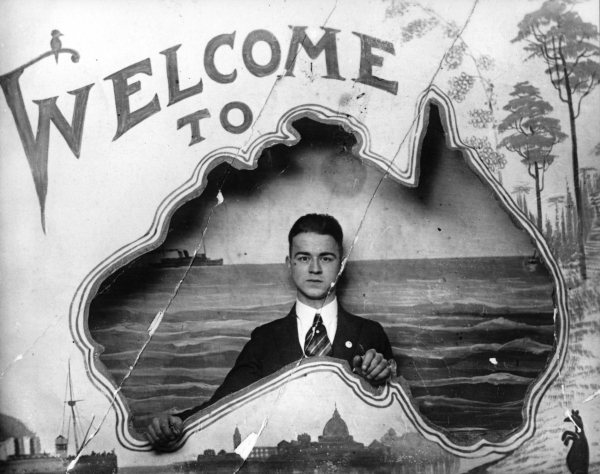Australian Embassy Lecture - Greek Presence In Australia
EVENT INFO
- When: 27 Jun 2019
- Time: 18:30 - 18:30
- Where: Australian Embassy, 5 Hatziyianni Mexi, Athens 11528
- Title: Australian Embassy Lecture - Greek Presence In Australia
- Contact Number: +30 2108704032
- Website: greece.embassy.gov.au/athn/home.html

The Australian Embassy in Athens is hosting two prominent authors and researchers for a unique presentation on Greek presence in Australia over the last 200 years on 27 June.
Leonard Janiszewski & Effy Alexakis, authors of 'Greek Cafés & Milk Bars of Australia', will present a unique chronicle and photographic journey across the diversity of Australia’s Greek presence over the last 200 years, on Thursday 27 June, at 18:30, at the Australian Embassy.The event is open to the public, however, RSVP is necessary as seating is limited. If you wish to attend, please send an email to ae.athens@dfat.gov.au with your name and phone number. We will confirm your attendance by 24 June on a 'first-come-first-served' basis!
‘In a strange land a stranger finds a grave, far from his home beyond the rolling wave.’ Inscribed upon the tomb of Andonis Manolis, Picton Cemetery, NSW, 1880
The lecture chronicles the depth and diversity of Australia’s Greek presence over the last 200 years.
We may never know who the first Greek to set foot on Australian soil was – as in Homer’s Odyssey, memory and myth have become one. However, in the early 1800s, Antipodean shores beckoned, gently at first – tentative ripples carrying the convicted, the adventurous and those desirous of new beginnings.
By the 1850s the gentle ripples of Australia’s early Greek presence surrendered to the first real wave of Greek migration – gold swiftly sweeping away the ‘tyranny of distance’ and the uncertainty of economic opportunities upon arrival. The first collective Greek settlements arose and ‘chain migration’ stimulated. In the 1890s, formal Greek communities were established in Melbourne and Sydney. By 1939, some 15,000 people of Greek heritage resided in the country. Following World War II, a larger, rapid and fiercer human inundation occurred: mass migration.
Between 1953 and 1956, almost 30,000 Greeks arrived in Australia. ‘Bride ships’ brought over large numbers of single Greek women. Between 1947 and the early 1980s, some 250,000 Greeks arrived in Australia. More recently, since the onset of the Greek economic crisis in 2008, Australia has again become a major destination for Greek migration, particularly to Melbourne.
Australia’s contemporary Greek community, including those of Greek descent, ranges in estimates from 500,000 to 700,000. As Janiszewski’s and Alexakis’ presentation will confidently highlight, it is a community that is as diverse within itself, as the multicultural Australian society in which it exists.
Photo info: Bill Florence (Vasilios Florias) being welcomed to Australia
Melbourne, Vic., 1922
Born on the Greek island of Ithaca, Bill arrived in Melbourne in 1922 as a young teenager. He became part of the chain migration of his family to Australia – his father two brothers and sister having journeyed out earlier.
Photo courtesy S. Raftopoulos and J. Florence, from the ‘In Their Own Image: Greek-Australians’ National Project Archives, Macquarie University, Sydney
